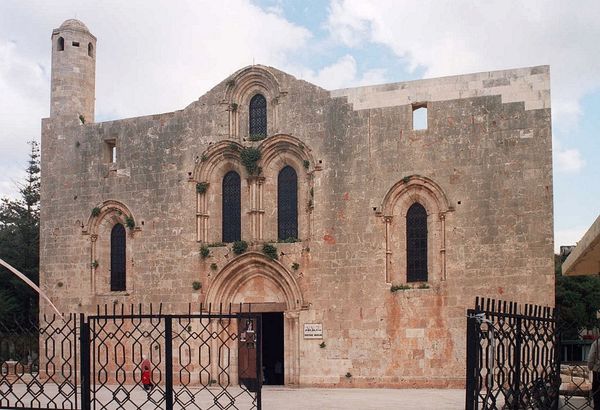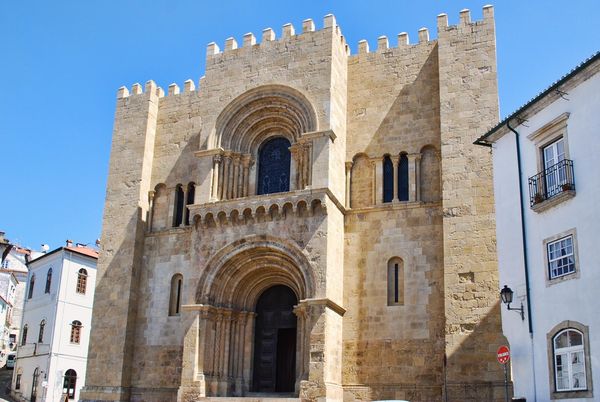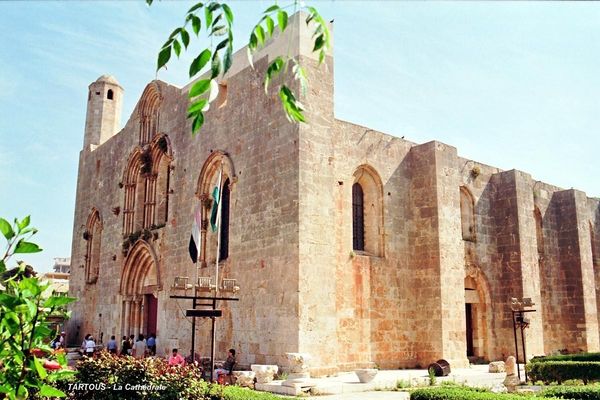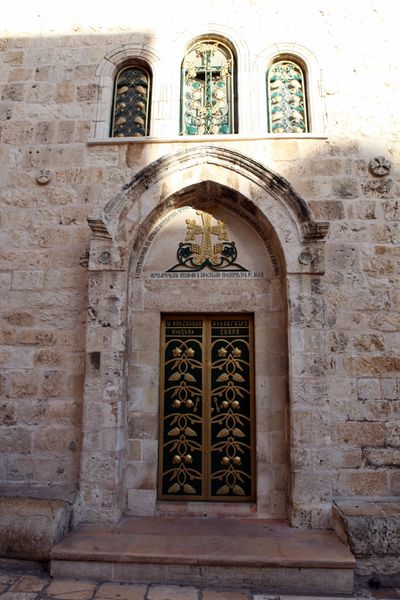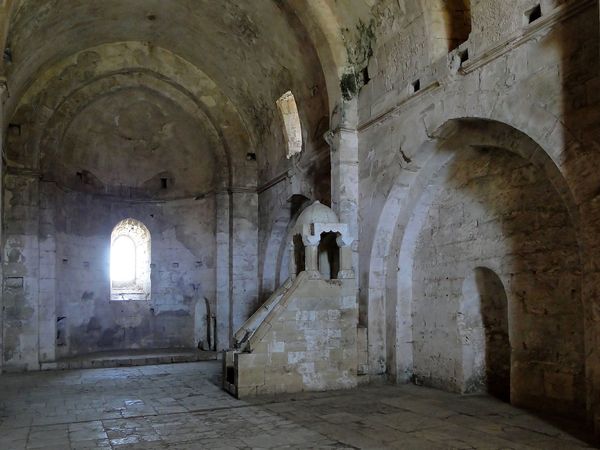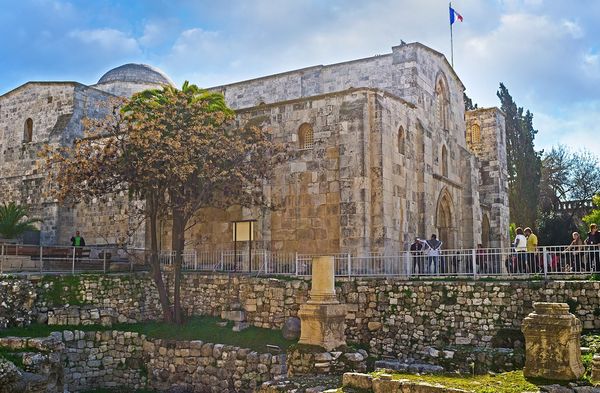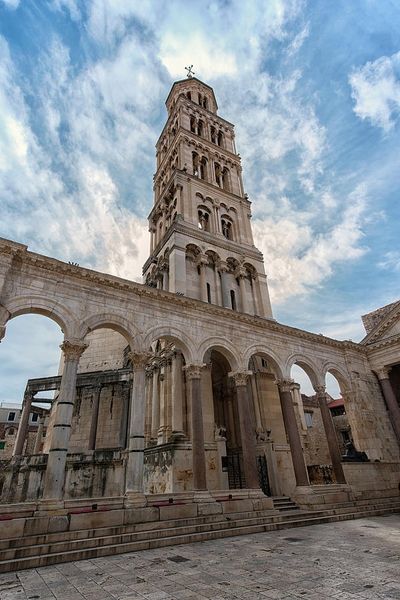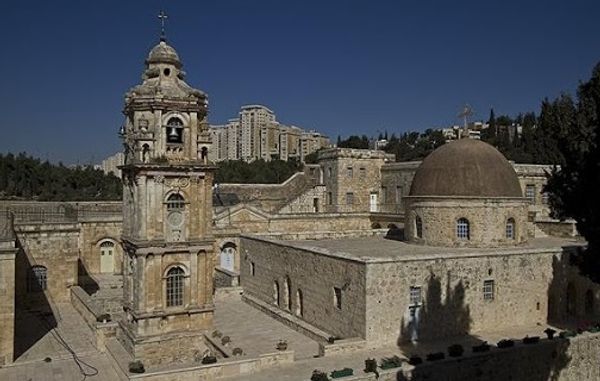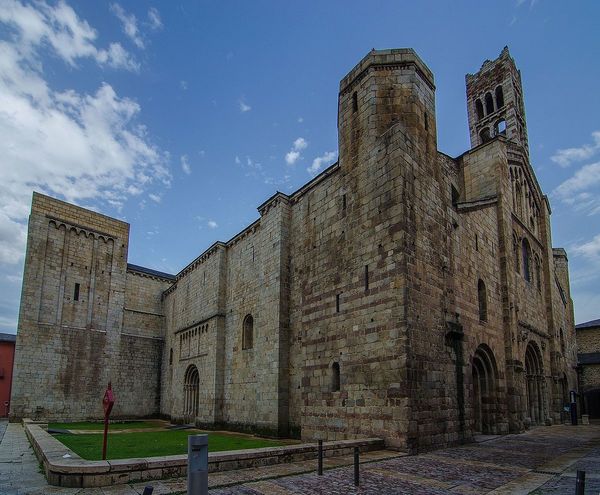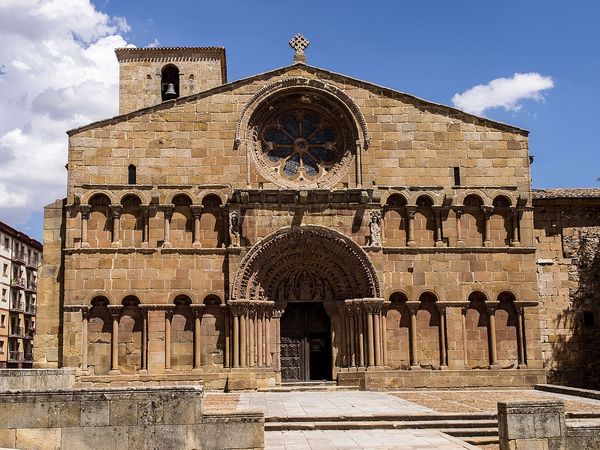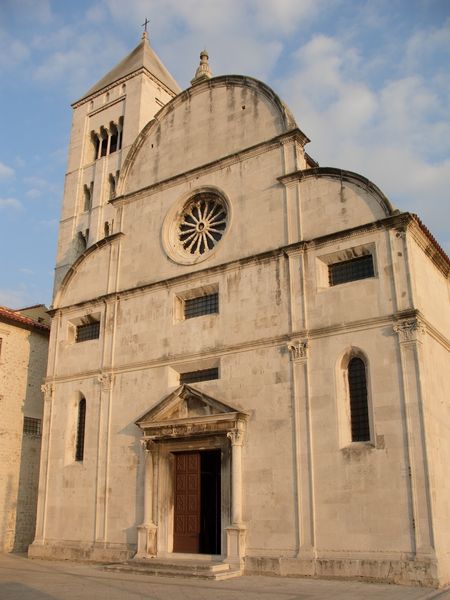
photography, site-specific, architecture
#
medieval
#
historic architecture
#
photography
#
romanesque
#
site-specific
#
architecture
Copyright: Public domain
Curator: This photograph depicts the Church of the Holy Sepulchre, situated in Jerusalem, Israel. Its construction dates back to 1048, an important moment during the Romanesque period. Editor: Immediately, I'm struck by the monumentality, the imposing geometric forms rendered in such pale, weathered stone, all radiating upward under a vast, bleached sky. The tower in particular—its cubic form—grounds the entire composition. Curator: Indeed. Its architectural significance resides within its historical context. As one of the holiest Christian sites in the world, the Church's structural evolution mirrors the religious and political shifts over nearly a millennium. Consider the building's role during the Crusades. Editor: Let’s consider its purely formal properties: the rough texture of the stone, the way the light catches on different surfaces and emphasizes its overall plasticity, giving way to the interplay of dark archways in this sun-bleached setting. The heavy stones create that striking solidity. It appears to be organized around vertical ascent. Curator: Precisely! Notice also how these architectural details act as an anchor connecting Christian communities and sociopolitical climates throughout a millennium. From pilgrimage site to the epicenter of various cultural, religious, and occasionally combative, claims of historical stake... Editor: One finds so much more looking beyond purely religious or cultural value to grasp something primal, even, about geometric abstraction—the square, the arch. They possess visual potency independent of function. A pure formal reduction brings the power to its architectural core. Curator: Agreed. Though ultimately, these pure forms are deeply informed and historically imbricated into layers upon layers of meaning. They operate simultaneously at different historical strata. Editor: Well, our exploration has affirmed that architecture engages and resonates profoundly across multiple modes of experience, both visually and culturally. Curator: Yes, quite. Considering both formal and historical contexts surely enhances our understanding.
Comments
No comments
Be the first to comment and join the conversation on the ultimate creative platform.

